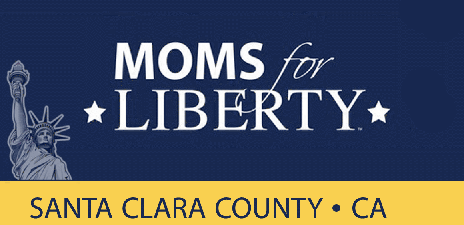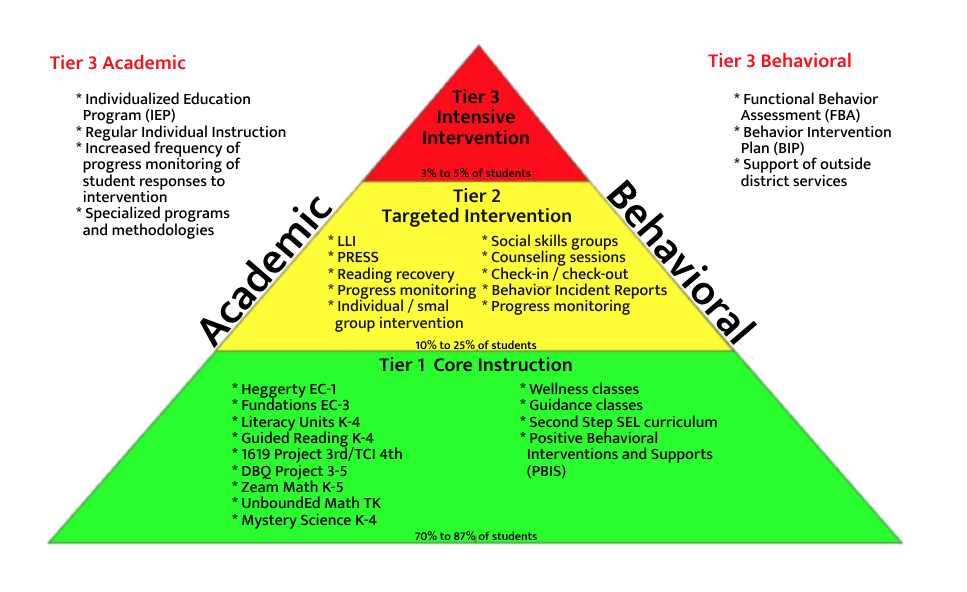
The Framework
The "framework" being pushed within the Santa Clara Unified School District. This crazy program is being foisted upon students by leftists across the country. See if you recognize the various components listed below. The descriptions are as represented by the district.
Multi-Tiered System Supports (MTSS) - Provides targeted support to struggling students (potentially by race, as indicated by SCUSD Equity framework), identifying and intervening early. Focuses on the "whole child", meaning academic growth, but also behavior, social and emotional needs, and absenteeism. (Identifies, evaluates and tracks the unique needs of students, tracks progress, and monitors student behavior).

Social Justice Standards - Anti-racist education framework divided into four domains: identity, diversity, justice and action.
Social Emotional Learning (SEL) - Process through which all young people and adults acquire and apply the knowledge, skills, and attitudes to develop healthy identities, manage emotions, achieve personal and collective goals, feel and show empathy for others, establish and maintain supportive relationships, and make responsible and caring decisions. ("Use a child's inherent empathy to make them become an activist" - Christopher Rufo).
Restorative Justice - Alternative to punitive punishment. Addresses the roots of student "misbehavior" and a willingness to rethink and rework classrooms, schools, and school districts. Relies on social justice curriculum (equity curriculum), strong ties among teachers and families, continuity of leadership, and progress towards building genuine communities of learning. (Places the child in question in front of a classroom and invites their peers to offer punishment options, along with teachers (tribunal).
Liberatory Design - A practice that: (1) Interrupts inequity and increases opportunity for those most impacted by oppression and (2) Transforms power by shifting the relationships between those who hold power to those impacted by these designs (de-platform, decolonize, decenter whiteness to platform and center blackness, ie no school assignments/biographies done on white historical figures, etc).
Asset-Based - Also known as "culturally relevant pedagogy", asset-based pedagogy views culture, literacy, and language differences of historically marginalized students as an added benefit to the classroom. Students are encouraged to connect to their identities (assets) and engage with learning on a deeper level (leveraging a students diverse identity and experience as an asset to learning, not a deficit).
Targeted Universalism - A 5-step process to simultaneously blend inclusion and achieve overall universal goals. Step 1: Get stakeholders to agree on a universal goal in response to a social problem. Steps 2 and 3: Assess how the general population and subgroups (broken down along race, identity, class, gender and geography) fare relative to the universal goal. Step 4: Identify barriers different groups might face. Step 5: Establish targeted policies. Each group gets varying levels of support tailored to its needs in achieving that goal. (Meets the goals of the many, while simultaneously targeting the needs of the few, so none are left out).
Equity Director - Redress long-standing school inequities. Improve educational opportunities of marginalized students by developing, updating, and guiding the implementation of district equity and nondiscrimination policies. Implement restorative-justice reforms. Support HR hiring and retention initiatives that increase teacher diversity. Design and lead professional learning about culturally responsive teaching and anti-racist instruction. Form community and business partnerships to ensure students are supported beyond the school day. Listen to and respond to the needs and wants of marginalized parents and students.
Anti-Bias Education - Involves creating a community that supports all dimensions of human difference, including culture, race, language, ability, ethnicity, religion, sexual orientation, gender, age, socioeconomic differences, and other areas of social differences. (Privilege Walks as early as middle school offered as a "teachable moment" to determine the "privileged" haves and the "less privileged" have-nots).
Inclusive culture - A positive environment promoting harmony and collaboration among students of all ethnicities, identities and backgrounds.
Culturally Responsive - Connects students’ identity, culture, language, and life experiences with what they learn in school (referring to geometric shapes in kente cloth will help black students with math/math equity).
Equitable Grading - Students graded on what they know (quality), not on work submitted (quantity). For example, teacher allows several extra weeks to make up missing assignments or no homework, deadlines, grading or testing needed if knowledge is demonstrated in-class. These shifts are made due to factors such as home/life situations or other stressors. (Schools are removing homework, no more letter grades being issued in grades K through 5).
Equity - In education equity is when every student receives the resources needed to acquire the basic skills of reading, writing, and simple arithmetic. Educational success in society can be measured by via outcome, not the resources poured into it. (The same outcome should be realized by everyone, regardless of the initial starting points)
Anti-Racist - Confront racial prejudice, systemic racism, and oppression of specific racial groups. Make conscious efforts and take deliberate actions to provide equal opportunities for all people on both an individual and a systemic level. Acknowledge personal privileges, confront acts and systems of racial discrimination, and work to change personal racial biases. (Expected to demonstrate activism in attaining social justice; passivity is looked on as being racist...).
The 4 pillars of Anti-Bias Education - Instruction, Classroom Culture, Family / Community Engagement, and Teacher Leadership.